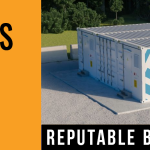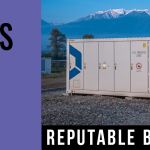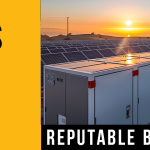 The world’s biggest and most effective battery, hydroelectric pumped storage, is more in demand than ever. The technology that uses water in an upper and lower reservoir to store and provide energy on demand is proving an important player in the rapidly changing global energy market.
The world’s biggest and most effective battery, hydroelectric pumped storage, is more in demand than ever. The technology that uses water in an upper and lower reservoir to store and provide energy on demand is proving an important player in the rapidly changing global energy market.
The biggest driver for energy storage is the need for a reliable clean energy source that can ensure the success of the global movement to reduce greenhouse gas emissions (GHGs). It is estimated that the pumped storage market size will surpass $390 Billion by 2024. The demand can be seen from Australia to California, the United Kingdom to China. Pumped hydro, which already accounts for 97% of installed energy storage capacity, is rapidly growing.
The push for GHG reductions and the need for energy storage at national, state, and local levels around the world continues to be the biggest market drivers in a changing energy mix. In 2016, the Paris Climate Agreement brought 195 nations together to move forward in this push. Recently the UN’s Intergovernmental Panel on Climate Change (IGCC) painted a bleak picture . The Paris agreement is not enough.
Communities are increasing the number of intermittent renewables that need large-scale energy storage options to integrate them into the electricity market, making energy available when people need it and storing excess generation when the wind blows and the sun shines, but there’s no demand for the power. While batteries, compressed air and fly-wheels are small-scale energy storage solutions, pumped storage remains the most reliable and most impactful scalable solution.
Obstacles to Meeting the Need
Despite an increase market demand for pumped storage, several obstacles continue to plague the industry. In the United States one of the biggest issues is the long and arduous licensing and permitting process for hydropower projects. The Federal Energy Regulatory Commission (FERC) has issued only a small handful of pumped-storage facility licenses in recent years. It can take up to five years just to get the approvals for a project, before construction can start. There must be more integration of federal and state agencies into the early-stage licensing process for these projects. Additionally, alternative streamlined licensing processes for low-impact pumped storage hydropower, such as off-channel or closed-loop projects with minimal environmental impacts, are needed.
read more
 The 21st-century grid is transforming faster than anyone imagined ten years ago, when natural gas seemed to be our power source of the future. Today, with ever-dropping prices in renewables and storage, the future is being re-defined.
The 21st-century grid is transforming faster than anyone imagined ten years ago, when natural gas seemed to be our power source of the future. Today, with ever-dropping prices in renewables and storage, the future is being re-defined. South Africa’s state-owned utility Eskom has unveiled its Distributed Battery Storage Programme at an event this week, committing to solar-plus-storage and energy storage projects totalling 1,400MWh.
South Africa’s state-owned utility Eskom has unveiled its Distributed Battery Storage Programme at an event this week, committing to solar-plus-storage and energy storage projects totalling 1,400MWh. The advent of technologies such as energy storage, small-scale embedded generation and smart grid solutions are set to fundamentally change South Africa’s electricitylandscape, outgoing Eskom generation group executive Thava Govender said during an opening address at the SA Energy Storage conference on Tuesday.
The advent of technologies such as energy storage, small-scale embedded generation and smart grid solutions are set to fundamentally change South Africa’s electricitylandscape, outgoing Eskom generation group executive Thava Govender said during an opening address at the SA Energy Storage conference on Tuesday. 2018 has been a good year so far for battery storage. Not only is the U.S. residential storage market booming, but an extension of the Self Generation Incentive Program (SGIP) in California is paving the way for ongoing growth over the next five years.
2018 has been a good year so far for battery storage. Not only is the U.S. residential storage market booming, but an extension of the Self Generation Incentive Program (SGIP) in California is paving the way for ongoing growth over the next five years. San Diego Zoo Global has chosen a unit of EDF Renewables North America to provide a 1 MW/4 MWh energy storage system that is designed to reduce energy costs while limiting emissions at the zoo.
San Diego Zoo Global has chosen a unit of EDF Renewables North America to provide a 1 MW/4 MWh energy storage system that is designed to reduce energy costs while limiting emissions at the zoo.



